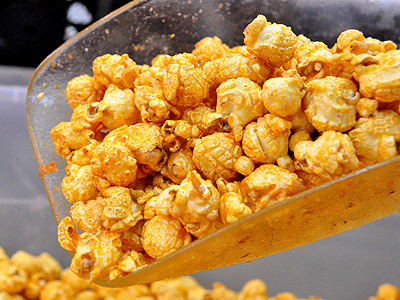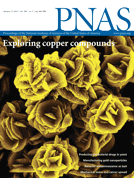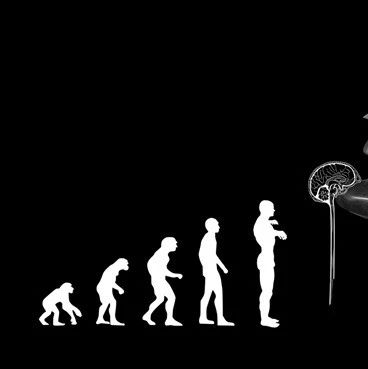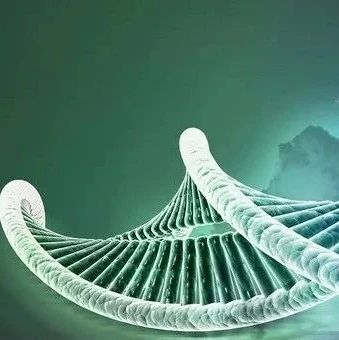
爆米花是现在广受欢迎的小吃,其实很早以前秘鲁人就开始吃了,不过可能不是我们现在所见的这个样子。
早在使用陶瓷之前,沿秘鲁海岸居住的居民就开始吃爆米花了,这比科学家先前预测的时间早1000年。这项研究发表在《美国国家科学院院刊》上,由史密森国家自然历史博物馆新世界考古馆长和史密森热带研究所名誉科学家Dolores Piperno与其他科学家共同撰写。
在秘鲁干燥的北部海岸上,有两处遗址,帕雷多内斯和普雷塔,科学家从中发现了一些6700—3000年前的玉米棒、稻壳、秸秆、穗须。这是迄今为止我们所发现的年代最为久远的。范德比尔特大学的Tom Dillehay和秘鲁国家历史科学院的Duccio Bonavia领导小组进行了这项研究。
在研究中,研究人员还发现了玉米微化石:淀粉粒和硅酸体。这些玉米棒的特点表明,生活在该地区的古老居民吃玉米有多种方法,包括爆米花和玉米粉。然而,玉米并不是他们饮食的重要组成部分。
“大约9000年前,墨西哥人首次将一种称为‘类蜀黍’的野草进行家种,成为玉米。” Piperno说。“我们的研究结果显示,仅仅在几千年之后,玉米就到达南美洲,并开始在那里演变成我们现在在安第斯地区常见的多个不同品种。这些证据进一步表明,在许多地区,玉米出现的时间比锅要早。在那时候,人们烹制玉米相关的食品并不需要使用陶器。”
要想了解玉米棒和玉米粒的微妙转变是怎样导致我们今天已知的数以百计的玉米品种的出现,以及每一个品种都是在什么时候什么地方出现的,是一个挑战。因为早期,在中美洲和南美洲之间的潮湿热带雨林,包括巴拿马,玉米棒和玉米粒都没有被很好地保存。而巴拿马,正是8000年前玉米首次离开墨西哥的主要经过路线。
“这些新颖独特的玉米品种可能是在南美洲迅速发展起来的,在那里它们不能被野生类蜀黍授粉。” Piperno说。“因为我们获得关于那段时期的可用数据是如此之少,所以这种玉米以及同时期其他玉米的形态信息对我们了解玉米的演变过程非常重要。”

 Preceramic maize from Paredones and Huaca Prieta, Peru
Preceramic maize from Paredones and Huaca Prieta, Peru
Alexander Grobman, Duccio Bonavia, Tom D. Dillehay, Dolores R. Piperno, José Iriarte, and Irene Holst
Maize (Zea mays ssp. mays) is among the world's most important and ancient domesticated crops. Although the chronology of its domestication and initial dispersals out of Mexico into Central and South America has become more clear due to molecular and multiproxy archaeobotanical research, important problems remain. Among them is the paucity of information on maize's early morphological evolution and racial diversification brought about in part by the poor preservation of macrofossils dating to the pre-5000 calibrated years before the present period from obligate dispersal routes located in the tropical forest. We report newly discovered macrobotanical and microbotanical remains of maize that shed significant light on the chronology, land race evolution, and cultural contexts associated with the crop's early movements into South America and adaptation to new environments. The evidence comes from the coastal Peruvian sites of Paredones and Huaca Prieta, Peru; dates from the middle and late preceramic and early ceramic periods (between ca. 6700 and 3000 calibrated years before the present); and constitutes some of the earliest known cobs, husks, stalks, and tassels. The macrobotanical record indicates that a diversity of racial complexes characteristic of the Andean region emerged during the preceramic era. In addition, accelerator mass spectrometry radiocarbon determinations carried out directly on different structures of preserved maize plants strongly suggest that assays on burned cobs are more reliable than those on unburned cobs. Our findings contribute to knowledge of the early diffusion of maize and agriculture and have broader implications for understanding the development of early preindustrial human societies.
文献链接:https://www.pnas.org/content/early/2012/01/11/1120270109







